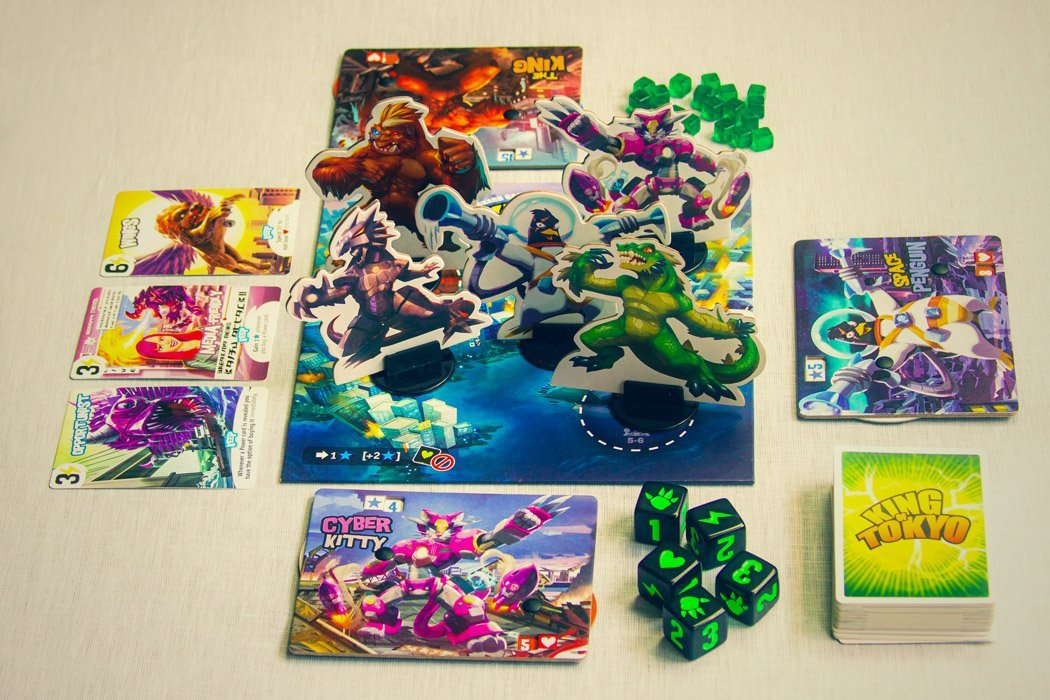Before King of Tokyo, I haven’t played any table game except UNO yet. I am glad that I have this chance to play with our classmates with this fun and full of fantasy aesthetic game
.
First, I like to briefly explain the rules and play process of King of Tokyo. This game allows 2-6 people to play together. Each player can choose his monster image agency and have their image card on the table. Also, there is a map of Tokyo included in this game. Players can choose whether to get into the position on the map or not in their turn. On each player’s turn, they have to rethrow any number of dice to act attack, HP restore, collect points or energy. And there are two winner conditions, either the other player’s monster’s health point becomes zero or you collect 20 points first; you will win and end this game.
The two major consistent parts of this game are cards and dice. On the player’s turn, they have to throw dice to detriment their actions. However, if players only can throw one time, this game will be a luck-determined game which I think will lose its playability, and be a gambling game. Allowing players to rethrow the dice three times makes this game become a more strategic game. Although it still has some luck factors in the game, the situation of the game becomes human’s controllable at least. Especially, I appreciate the dice design, each 6 d dice have one side for attacking, restoring, and energy. The other three sides are 1,2,3 numbers to collect points and only the player gets points when they get three dice or above with the same number. Which, creates a kind of risk but the payback is also profitable. The card system is another big factor influencing the game. Cards can be traded by using the energy points, gaining more energy to buy cards means that the player has to gain fewer points, attack, and HP restore chance. On the other side, powerful cards may be worth and suited for some of the situations helping the player win the game. To sum up, I think this game is not only satisfied for casual players but also can be played with serious players. It’s a game everyone can get entertainment from.
Another good aspect of King of Tokyo is its atheistic themes and designs. I am 100 percent sure that it learns from the Kaiju movie in Japan. I don’t think it’s a bad thing since this doesn’t affect the core mechanics of the game. In fact, it hugely wides the target player’s age period. Adults and children both won’t think this game is too old or strange.
Despite its many strengths, I think this game has insufficient points when my members and I finished playing this game. First, the turn-battle system just makes this game so slow, especially after the player throws his dice, he only can do fewer things when it’s the other player’s turn. Compared to the game Dexit, it lacks instant interaction with others. Second, I think some of the card designs are too powerful. I feel a kind of unbalancing when another player was using some cards. It could be a big issue, but I know that the card balance design is pretty difficult. And some of the cards in this game forced the players to take them; otherwise, you will lose this game.
Overall, I think King of Tokyo is a great table game for both casual and strategic players. I like to play it.
